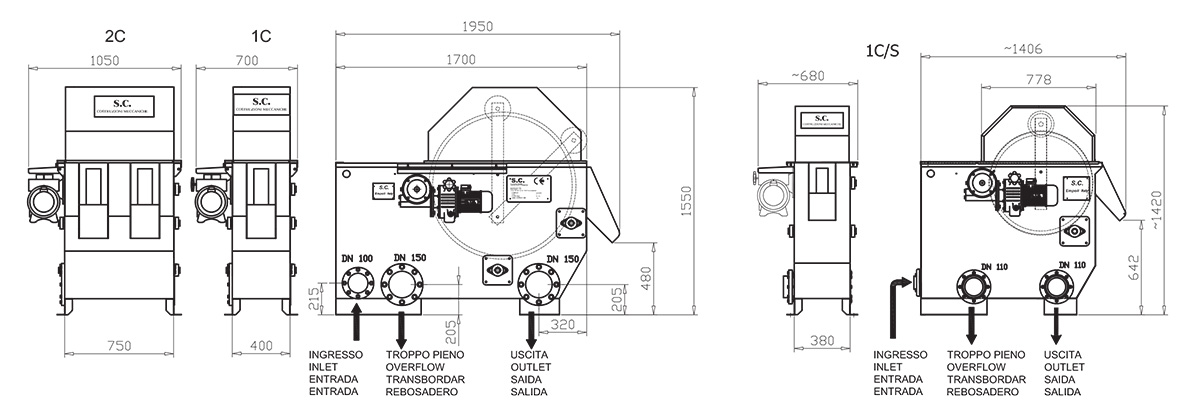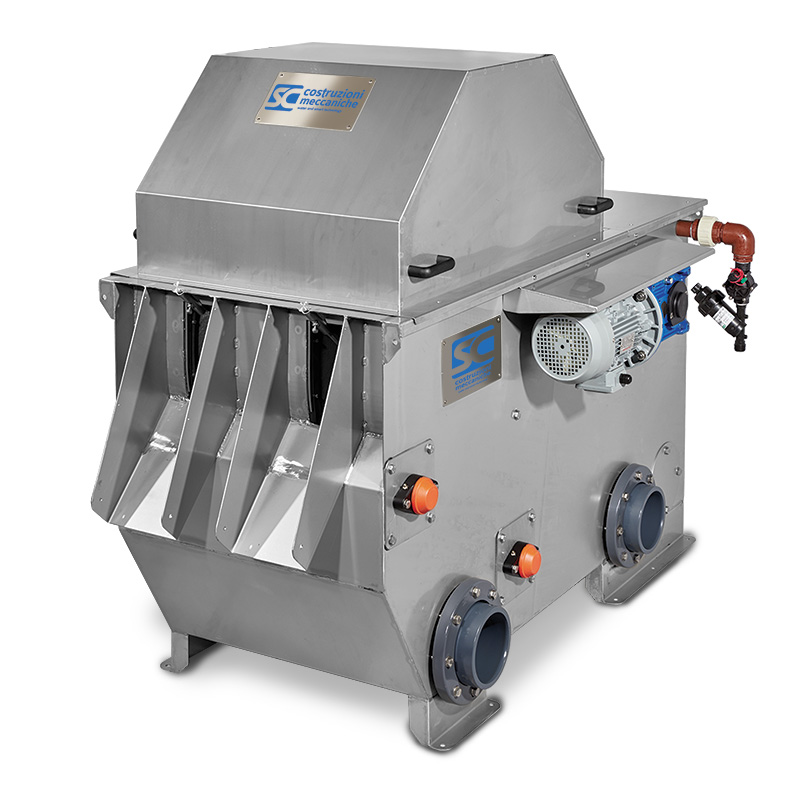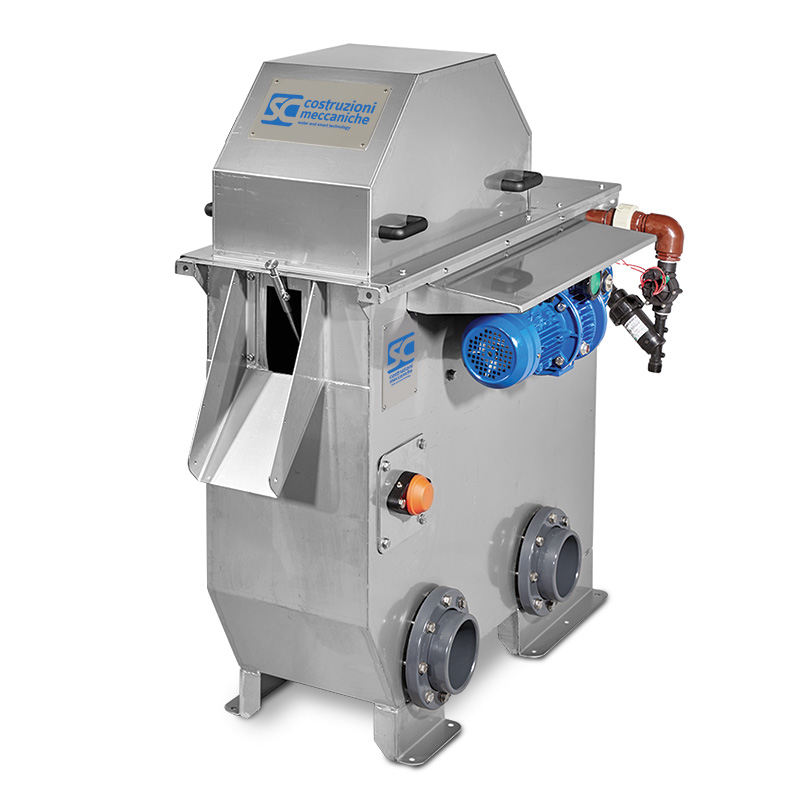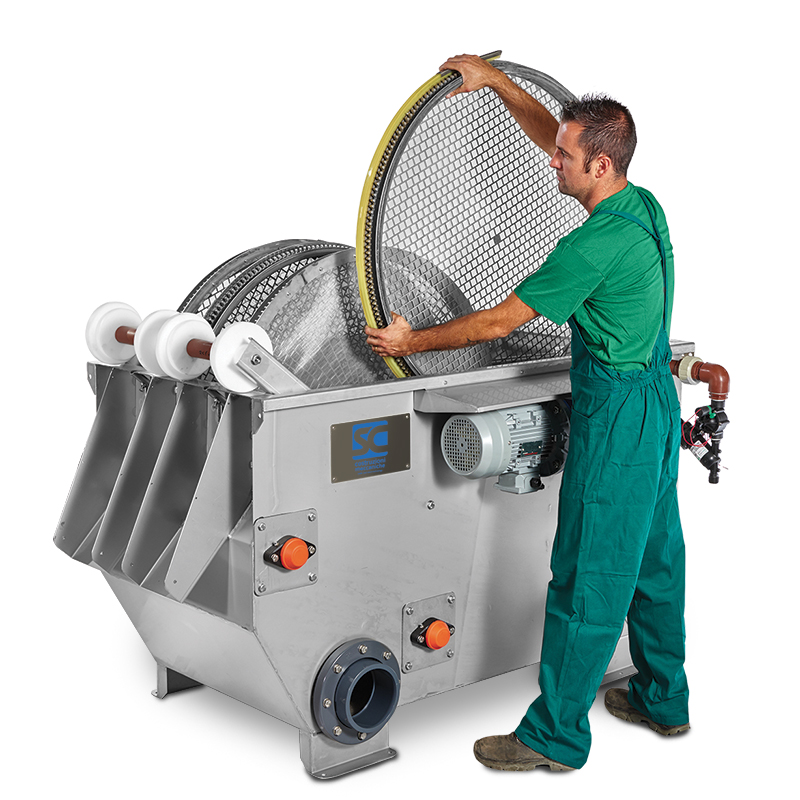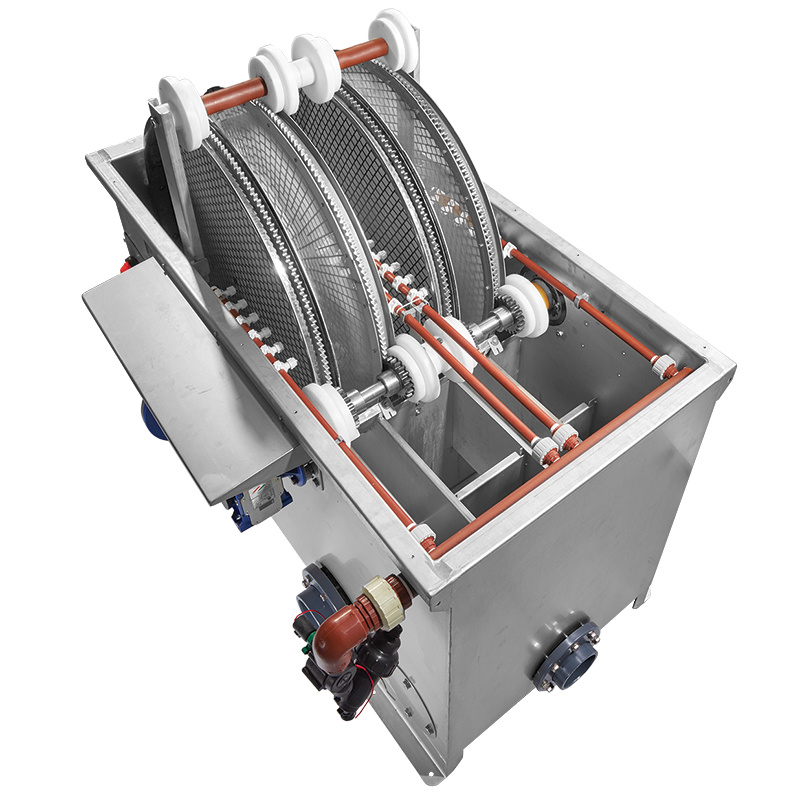Main features
The microfiltering system with inlets smaller than 1 mm represent the evolution of traditional screening and enable to improve the capacity of removal of the suspended material before the following treatment phases, whether the factory discharges into its own plant or into a centralised plant. The range of Cleandisc microfilters (patented) represents the evolution of a widely tested machine, the rotating disk filter, opportunely modified for an easier and quicker maintenance of the filtering nets.
Technical features
The CLEANDISC microfilters consist of a tank divided into three section: feeding, clarified discharge and excess liquid. The flowing back liquid is pumped to the feeding section, it flows through the space between the couples of rotating disks covered with filtering net. Water filters through the net and passes to the discharge section, while the solid particles are retained inside the disks. During their gradual increase in quantity, they form compact masses that, scraping the inner surface of the filtering nets, keep them clean. When the retained solid parts exceed a certain volume, the machine automatically begins to discharge them. The filtering nets are periodically cleaned by means of a system consisting of counterwashing nozzles at the end of the working cycle.
The innovating of CLEANDISC
The innovative solution projected by S.C. with its Cleandisc is simple and effective: the central axle has been eliminated and the disks are mounted on driving rolls; the rotating movement is transmitted to each disk by means of a pinion mounted on the axle of the motor reducer gearing with the external edge of the disk. In this way the disks are easily movable from their site, without using any tool, and in few minutes can be deeply cleaned, even by high pressure water, or, if spare disks are available, they can replaced with clean disks . The level of filtering efficiency is always high, and we can prevent an irreversible obstruction of the filtering nets. The breakage of a net only involves the replacement of the damaged disk that can be repaired without the intervention of engineer. If disks with different thickness are available, it is possible to obtain a quick fitting of the machine characteristics to different needs.
Technical features






